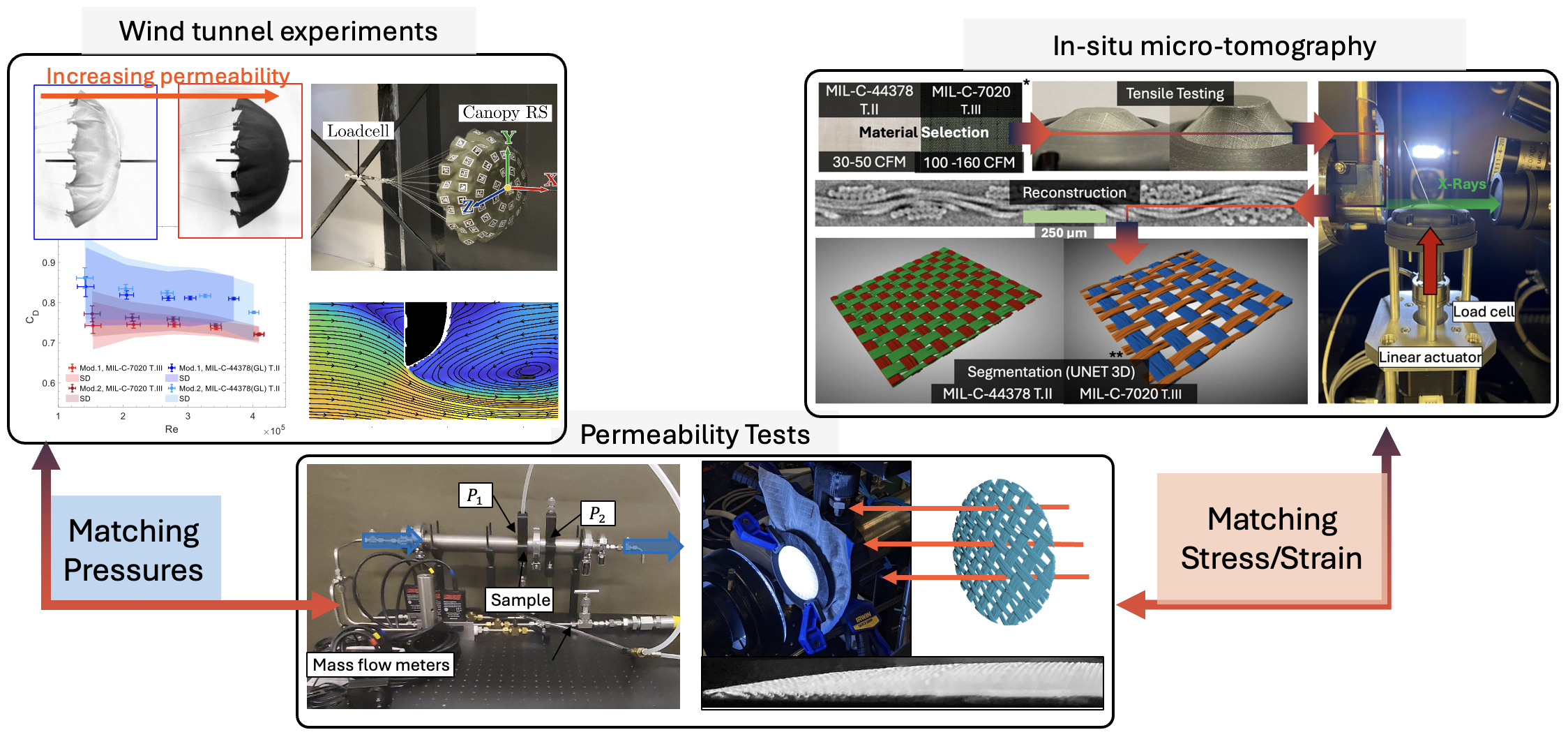Turbulent and Multiphase Flows
Preferential concentration of particles (solid particles or droplets) by turbulence, the spatial characteristics, and dynamics of clusters of particles, and their impact on the carrier fluid, are of upmost importance to a vast array of applications. Industrial and energy processes, pollution dispersion and risk mitigation, vehicle aerodynamics and system damage in dusty flow operations, are few of them.
Our group has built the US longest vertical channel flow facility to study turbulent-particle laden flows. With a total channel length of 225 times its width, fully developed turbulence is ensured at the 2m long acrylic test section. It can operate at Reynolds numbers based on channel width up to 82000 (friction Reynolds number about 2000). Its modular design enables a wide range fundamental research on wall-bounded turbulence and particle-laden flows such as the impact of surface roughness, heat transfer or electrostatic effects.
Ongoing efforts: Clustering temporal statistics, formation and desintegration of particle clusters by turbulence; Adjoint-based Training of Embedded Neural-Network Models for Particle-laden Turbulence
Graduate researchers: Tuhin Bandopadhyay, German Saltar Rivera,
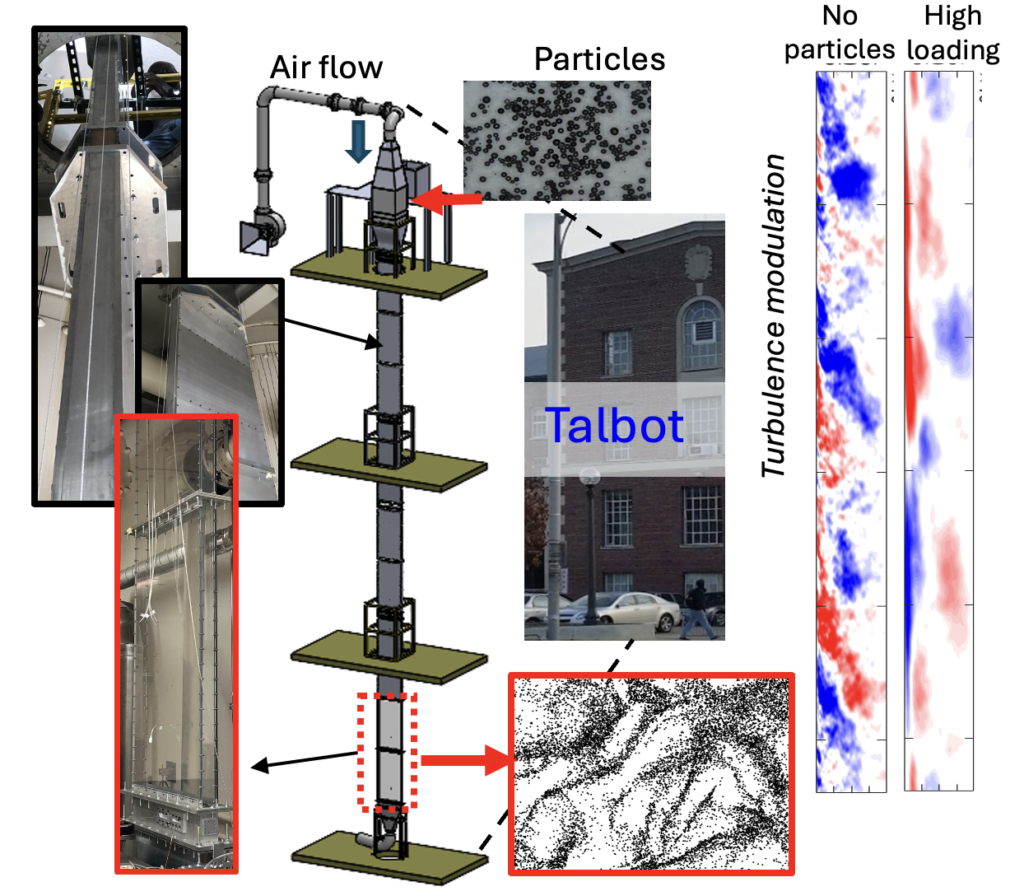
PLUME SURFACE INTERACTIONS
During the final descent of a powered space exploration vehicle onto the landing site, the high-speed plume interacting with the surface can significantly alter the local topography and create dense clouds and sheets of eroded material. Mission risks associated to plume-surface interactions (PSI) vary widely with thruster, atmosphere, and surface properties, all playing critical roles on surface erosion, crater formation, regolith entrainment and ejecta dynamics. Advancing our understanding of plume surface interactions and developing models that capture the leading physics is essential for future space exploration missions.
Our group at UIUC has developed a subscale PSI vacuum chamber facility that allows reproducing many of the non-dimensional parameters relevant to Lunar and Martian landings. It consists of a Mach 5 thruster in a vacuum environment that impinges on substrates such as instrumented flat plates and granular media surfaces. The experimental conditions can be easily adjusted to cover a wide envelope of flow, granular and erosion non-dimensional parameters. Non-intrusive characterization of flow, ejecta dynamics and cratering is achieved by combining multiple diagnostics such as high-speed Schlieren, Nitric Oxide Planar Laser Induced Fluorescence, surface pressure sensors, planar particle-tracking velocimetry, high-speed imaging with volumetric illumination, 3D photogrammetry and lastly a novel millimeter wave interferometric technique that enables ejecta concentration measurements in optically opaque particle-fluid mixtures. Qualitative and quantitative data from these experiments enables phenomenological understanding of PSI, development of semi-empirical models and validation of computational tools.
At less extreme conditions, the interaction of a jet with a granular surface is relevant to many natural and engineering processes on Earth. Different erosion regimes and ejecta dynamics, but much of the same phenomenology.
Coming soon: subscale PSI ambient facility, mm-wave interferometry advances, data-based and physics driven models
Graduate researchers: Nicolas Rasmont, Hussein Al-Rashdan, Lorenzo Bruni
Collaborators: Gregory Elliott, Joshua Rovey, Fabien Evrard, Jesse Capecelatro

Selected frames during PSI experiment at UIUC subscale PSI vacuum facility. Mach 5 jet, jet mass flow 8.65 g/s, h/D=10, jet expansion ratio 2.84
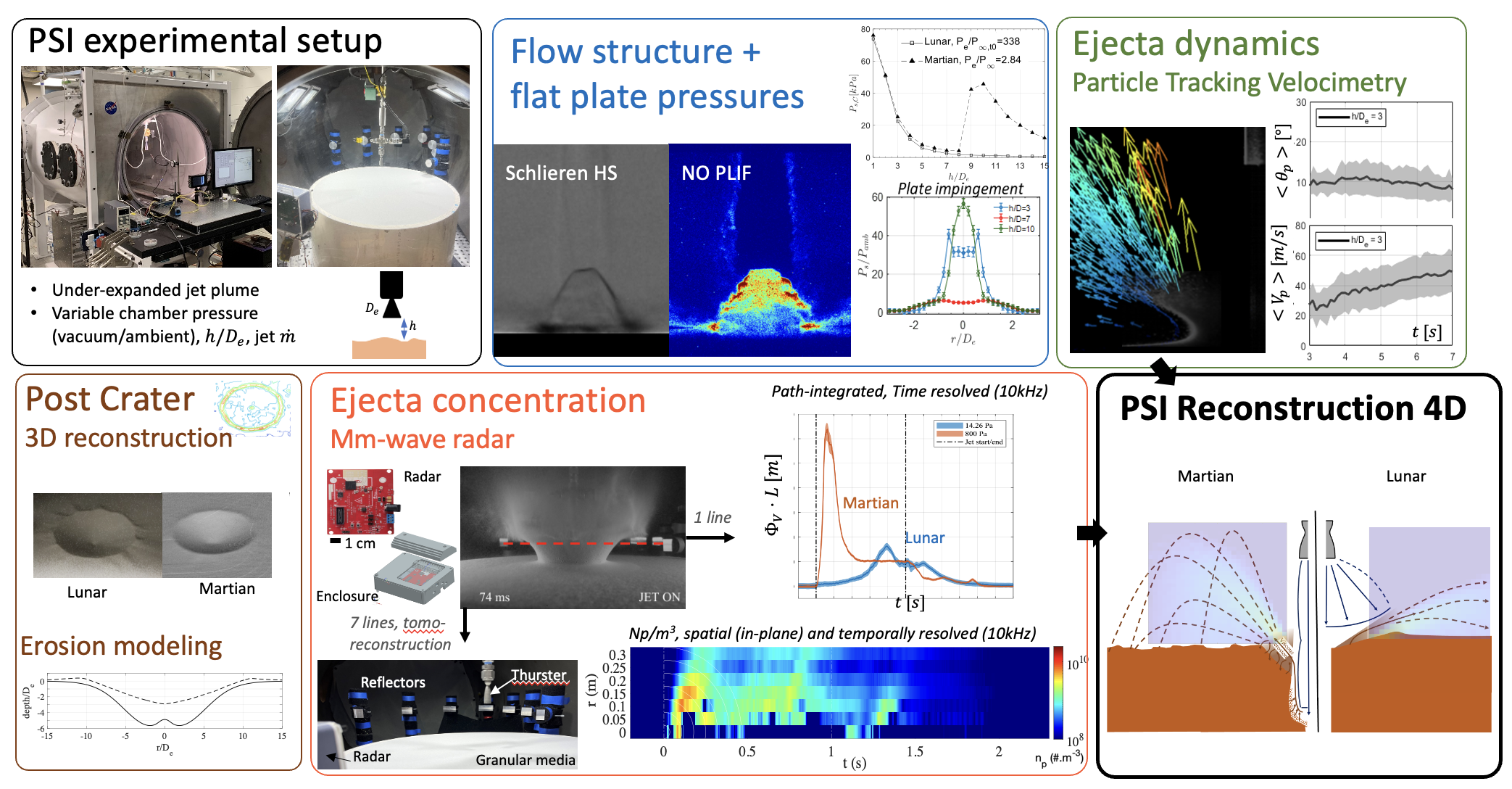
Summary of diagnostics and representative data outputs
Supersonic particle-laden flows
Momentum exchange between particles and fluid can significantly alter the otherwise single phase flow. Precipitation, clouds, atmospheric debris, or water mist at low altitude, all behave as inertial particles when interacting with a high speed vehicle. Non only they can damage the vehicle under impact, they also affect the flow field around the vehicle. Experiments are performed in our group using an underexpanded Mach 1 jet loaded with glass beds of 117 um nominal diameter in a setup that allows independent control of the particle feeding rate and the particle discharge velocity and position within the jet settling chamber, as well as the air mass flow. Well controlled experiments are key to validate drag models for high loading compressible flows. Due to the particle inertia, particle and flow acceleration within the nozzle need to be quantify for apples-to-apples comparisons of flow modifications and particle statistics in different experiments (numerical or experimental.
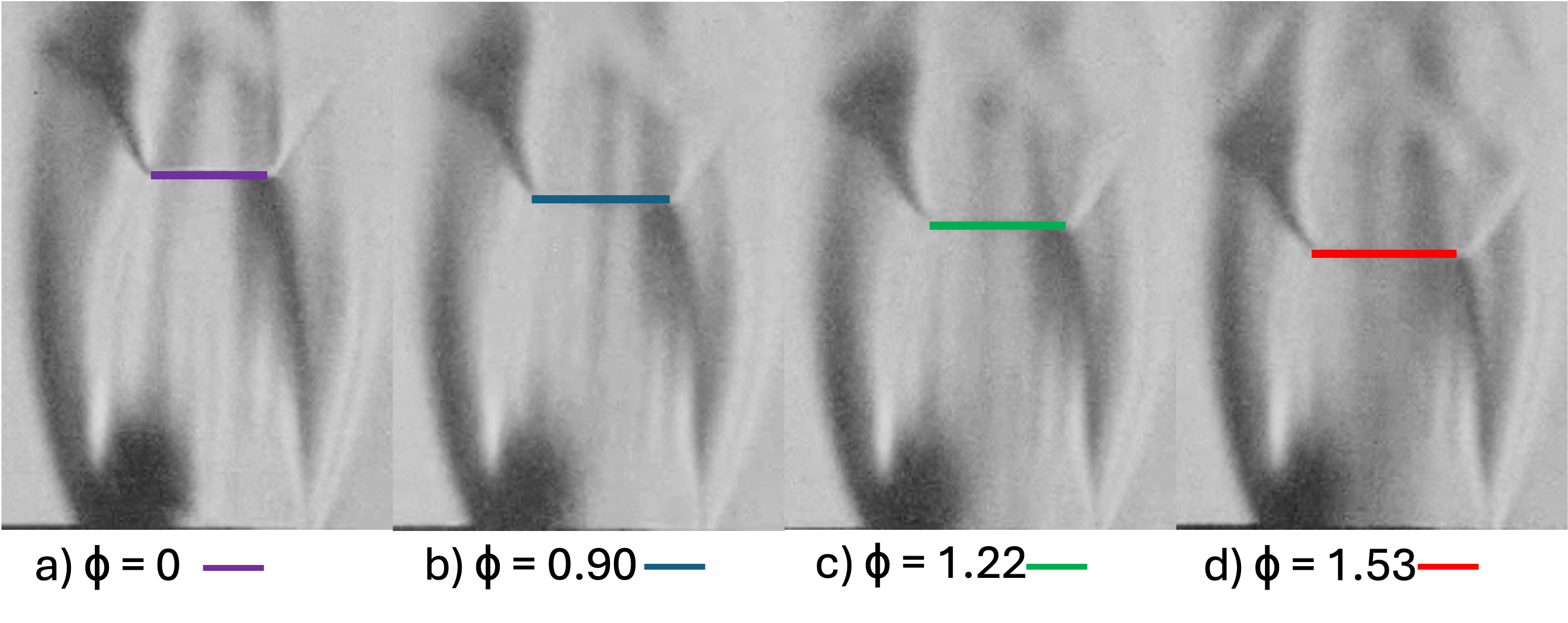
Schlieren flow visualization, Mach 1 underexpanded jet with increasing particle loading
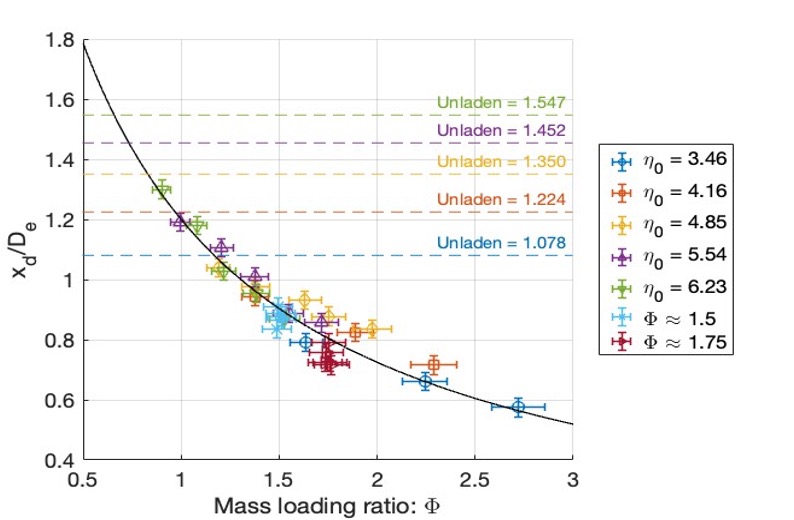
Mach disk position variation with particle loading and jet expansion
Magnetic Resonance Imaging for fluid dynamics.
Three-dimensional flows, and particularly in complex internal flow configurations or along complex topographies, pose major challenges to designers, to numerical predictions, and to conventional experimental approaches. What can we do to study these flows of much practical interest where high-fidelity simulations are unaffordable, low fidelity ones not sufficient for design optimization, and, due to limited optical access, intrusive point-wise measurements are often times the only option? The answer is Magnetic Resonance Imaging (MRI). MRI is extensively used in the medical field, but its potential extends to many disciplines, including fluid dynamics.
Our
group is working with researchers at the Biomedical Imaging Group (BIC)
at Beckman Institute to advance MRI based techniques for
three-dimensional velocimetry and concentration measurements, MRV and
MRC, respectively. Our test sections consist on SLA models that
reproduce the flow configuration under study and instead of a wind
tunnel we use water flow loops that ensure a constant and uniform flow
velocity at the inlet. Prototype to 3D results times are reduced
compared to the use of conventional wind tunnel testing, and
non-dimensional aerodynamic parameters are equally matched.
Graduate researchers: Tuhin Bandopadhyay, Abhisheka Mathur Sekar, Carla Conesa Fuentes
Collaborators: Brad Sutton, Aaron Anderson (the BIC team at Beckman Institute)
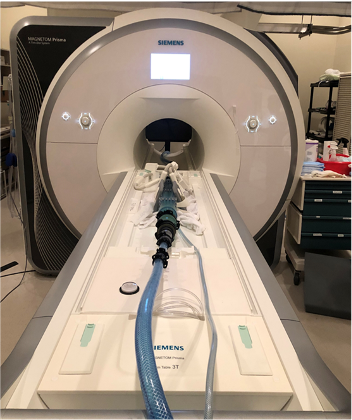
MRI setup
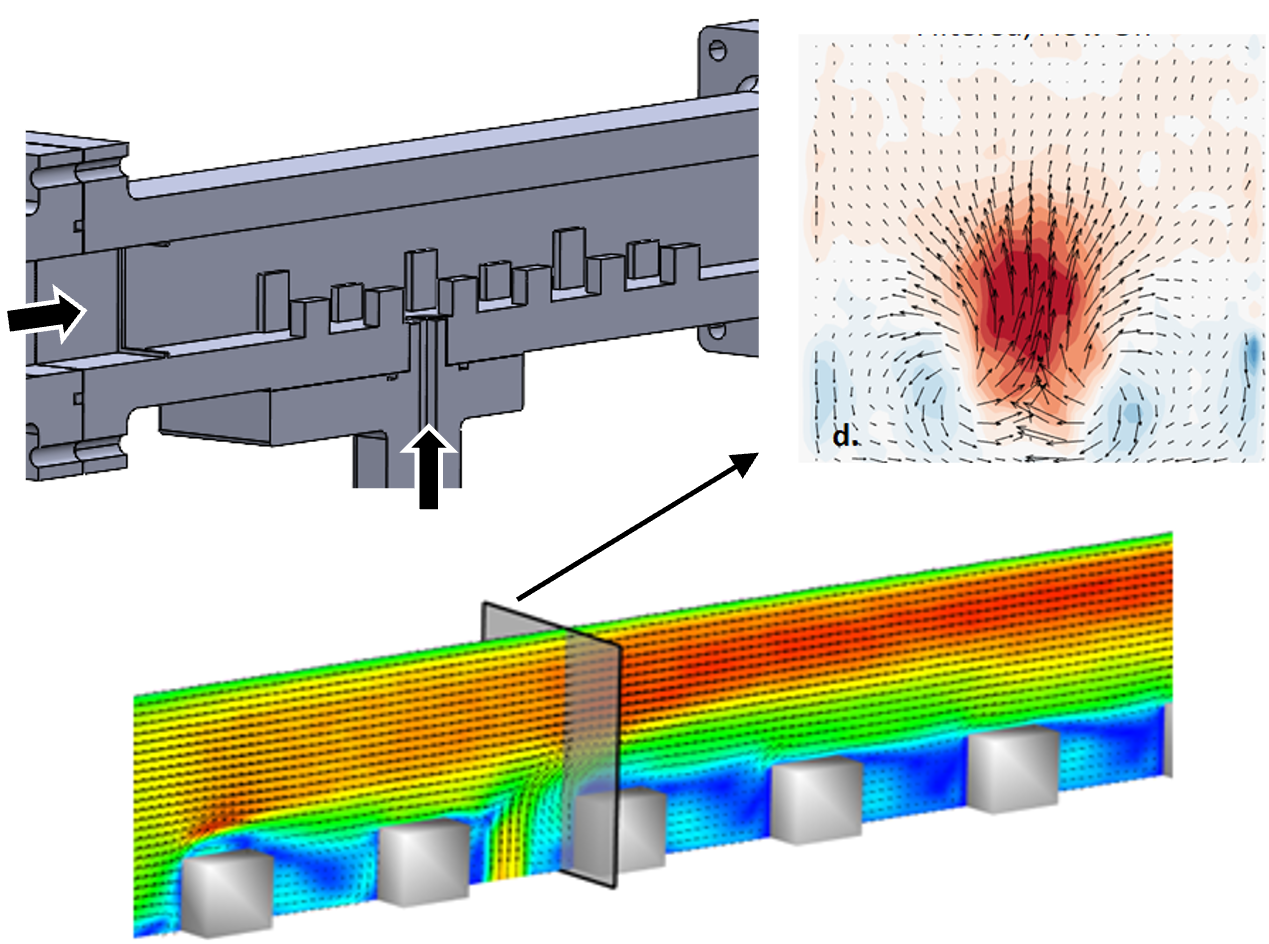
Flow over an inhomogeneous roughness array with jet in cross flow. Test section (top left), 3D velocity field (bottom), in-plane velocity showing jet updrift (top right)
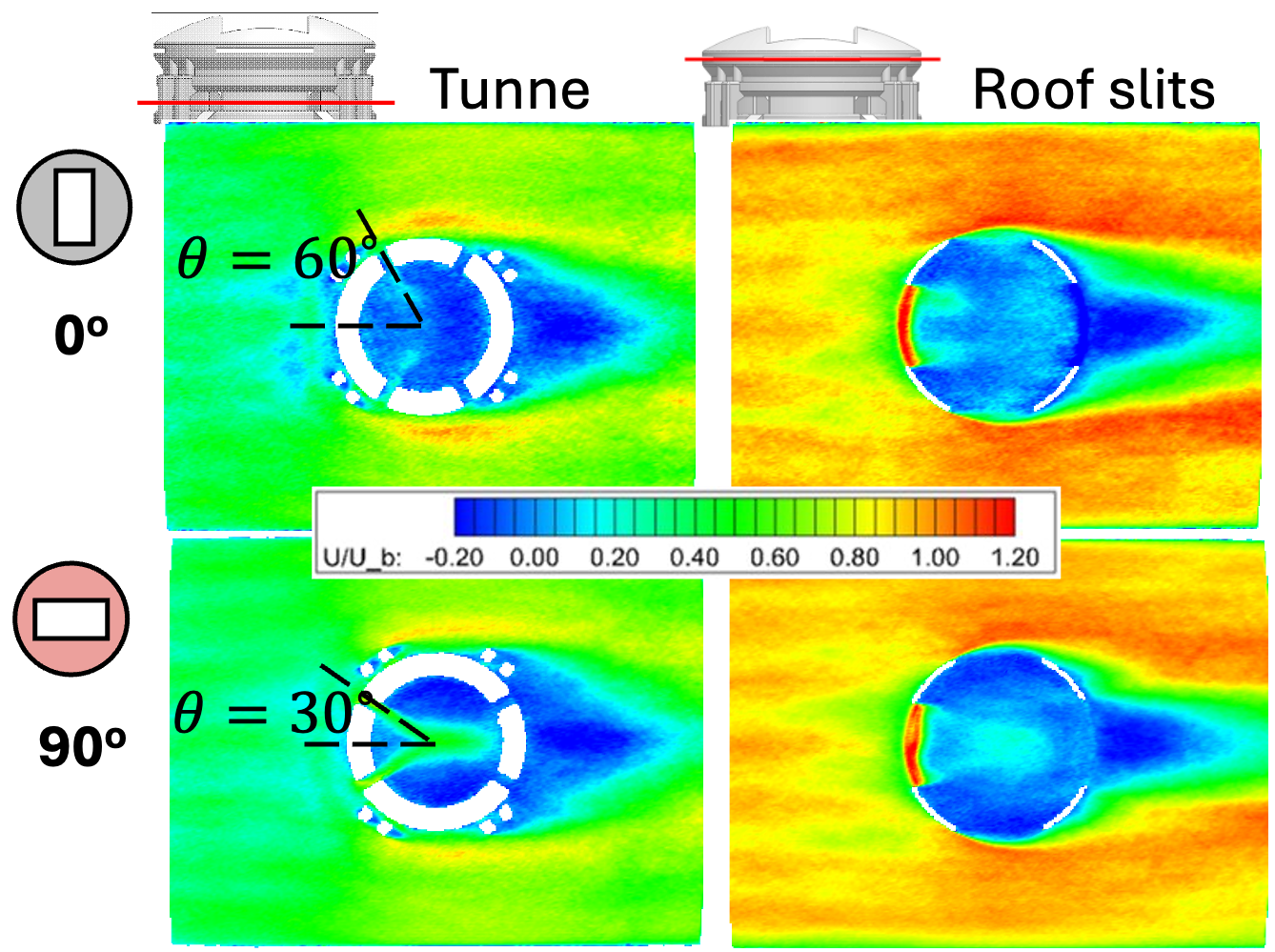
3D velocity flow field around a generic stadium for varying wind angles, ventilation dynamics
Parachute fluid and structural mechanics
Fluid Structure interactions in flexible and porous materials
Graduate researcher: Cutler Phillippe
